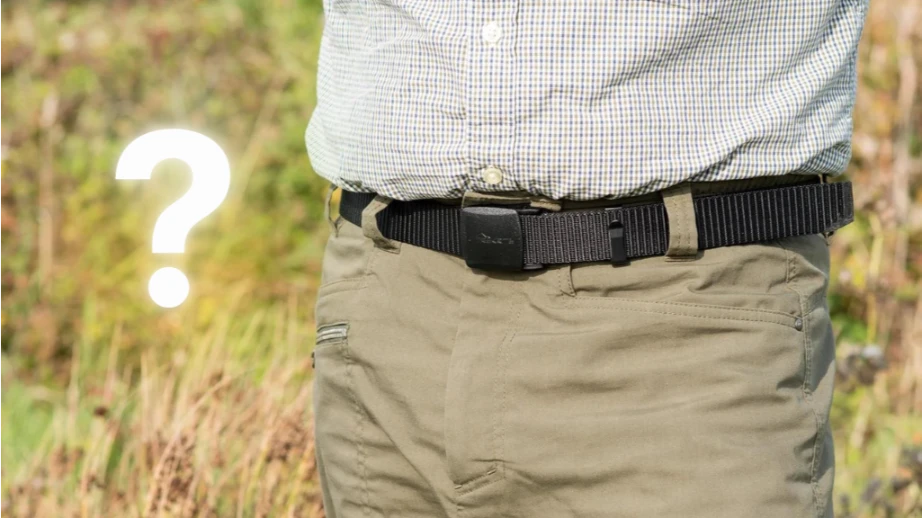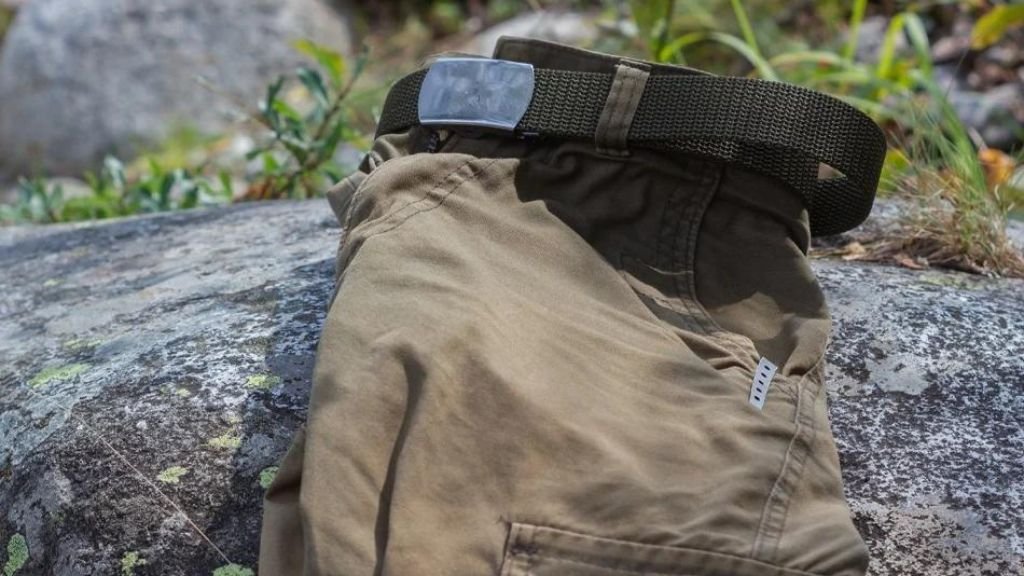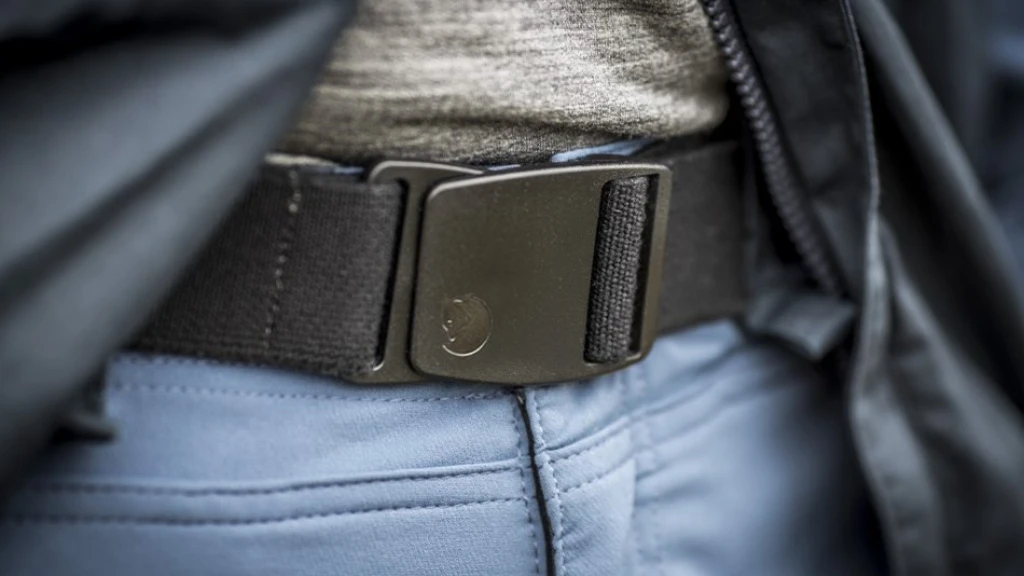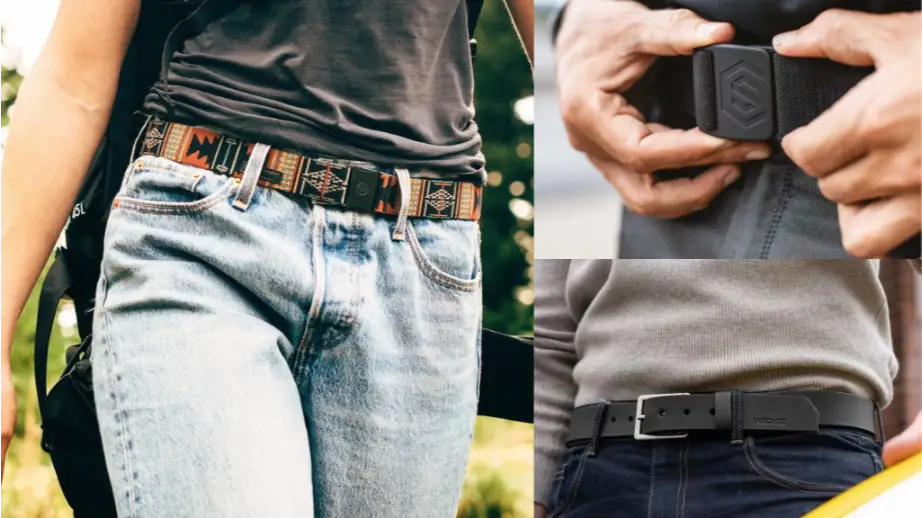While belts might not be the most critical piece of your hiking outfit, I personally can’t imagine setting off on a hike without one. It’s like heading out without my favorite pair of boots – something just feels off.
Now, you might be one of the savvy hikers who’s already clued into the fact that not all belts are created equal. Or perhaps you’re trying to figure out what on Earth could be so special about a hiking belt compared to your old leather one.
Whichever camp you find yourself in, I’m here to guide you through the maze of choosing the right hiking belt for your hikes. If you’re considering getting one, you’re on the right track to enhancing your hiking experience!
How to Choose the Right Hiking Belt? 6 Key Factors to Consider
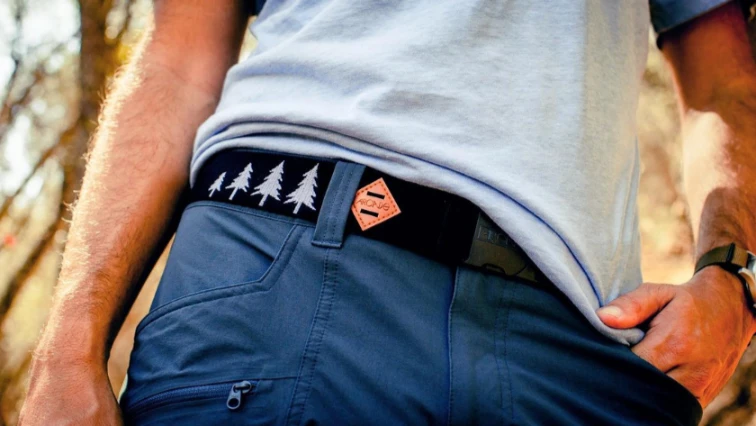
Weight: Is Your Belt Light Enough for the Long Haul?
On my hikes over 10 miles, every ounce matters. It’s not just about the big stuff like your backpack or shoes – the little things add up too! A heavy belt that weighs almost a pound may not seem like much, but it can start to feel like a chain around your waist, dragging you down mile after mile.
When I switched from my heavy leather belts to a lightweight hiking belt, I instantly felt more agile and less burdened. It’s all about reducing unnecessary weight, and a belt is an easy place to start.
Durability: Can Your Belt Handle the Wild?
You need gear that won’t give up on you. That includes your belt. A belt breaking at the wrong time can be annoying and mess with your pace and even your safety.
When it comes to picking a belt that’s ready for anything, material is king. Nylon webbing tops the list because it’s tough and handles the tension and weight of your gear without hesitating. It laughs in the face of extreme weather, from scorching desert heat above 100°F to damp and cold trails below 30°F.
Criteria for a Durable Belt
How do you know if a belt is cut out for the wild? Here’s what to look for:
- Material Strength: It should feel sturdy in your hands. If it’s nylon, you’re on the right track.
- Buckle Integrity: The buckle is the heart of your belt. Metal might seem strong, but in cold conditions, it can be a pain (literally). High-quality plastic or lightweight metals designed for outdoor use are your best choices.
- Weather Resistance: Can it handle being soaked during a sudden downpour or not fade under the blazing sun? Your belt should come through these scenarios unscathed.
Comfort: Ease on the Trail
Ever had that annoying dig from your belt under your backpack hip belt? That’s where flat buckle belts, like those from Arcade Belts, come to the rescue.
These belts are designed to lie flat against your body, meaning no more painful pressure points under your backpack. It’s like they’re not even there, but your pants stay right where they should be.
Stretch Your Limits with Elastic Belts
Now, onto another favorite of mine – elastic belts. If you’ve ever tackled a trail longer than 10 miles, you know your body goes through a lot. You stretch, bend, climb, and sometimes squeeze through tight spots. A rigid belt can turn those moments into a struggle.
That’s where elastic belts shine. They offer that sweet spot of flexibility, moving with you, not against you. This means less chafing, no readjusting, and more focus on the beauty around you.
Versatility: Beyond the Trail
Webbing belts are great here because they’re tough, they’re adjustable, and they fit a range of activities. I’ve gone from scaling cliffs to cycling through city streets without once thinking that I need to switch my belt.
No time to change? No problem. Stylish hiking belts blend in seamlessly with your casual wear, making them perfect for a post-hike burger joint visit or a spontaneous meet-up with friends.
Convenience: Gear Up Smart
Let’s say you’re out on a winter hike or tackling a high-altitude trek and your hands are freezing. Now, suppose you need to adjust your belt. Sounds simple but it’s actually quite the opposite if you’re bundled up and your fingers are nimble.
That’s why choosing a belt that’s easy to adjust in cold weather or while wearing gloves is critical.
Why Easy-Adjust Belts Are a Must-Have
- Cold Weather: Your dexterity takes a nosedive in cold temperatures. A belt that requires minimal fiddling is a lifesaver.
- Gloved Hands: Ever tried tying a knot with gloves on? A belt that lets you adjust without taking off your gloves keeps you warm and frustration-free.
Breathability: Beat the Heat
A non-breathable belt might keep your pants up, but it’ll also ensure that sweat stays put, leading to discomfort and some pretty awkward chafing.
So, how do you pick a belt that won’t leave you stewing in your own sweat? Look for materials that love to let the air in and out. Fabrics like mesh or lightweight, perforated synthetics are your best choices.
5 Practical Features to Look for in a Hiking Belt
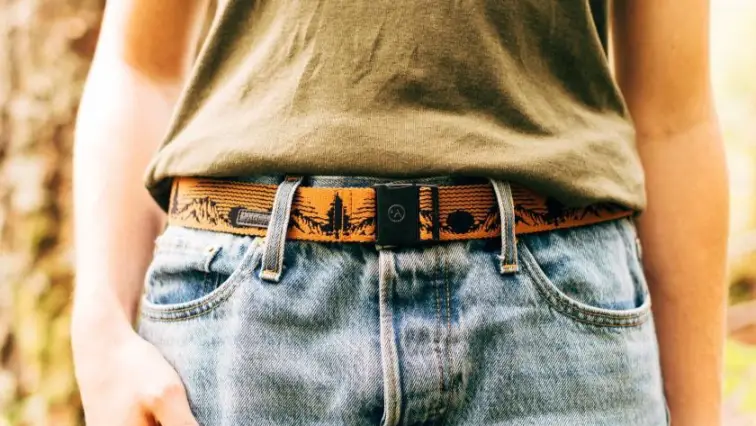
While picking the right style and material for your hiking belt is important, here are five practical features to look out for:
Hidden Pockets
I love the Bison Designs T Lock Money Belt. It comes with hidden pockets where you can tuck away a few bills or a key so I don’t have to worry about losing my valuables again. It’s like having a personal safe around your waist.
Adjustable Sizing
Ever lent a belt to a friend only to never see it fit quite right again? A belt that lets you adjust its length ensures you’re always comfortable, no matter how many layers you’re wearing.
Attachment Points
Belts with attachment points are ideal for avid hikers and backpackers. You can easily clip on keychains, multitools, or other small items without adding extra weight to your pack.
A Clasp You Can Rely On
There’s nothing worse than hearing the sound of your gear hitting the ground because the clasp gave out. That’s why a reliable clasp mechanism is non-negotiable. Whether it’s a snap buckle or a sturdy metal clasp, it needs to handle jumps, climbs, and the occasional stumble without batting an eye.
The Perfect Width
A width between 1 to 1.5 inches strikes that perfect balance of providing enough support without digging into your sides. It’s also versatile enough to fit through most pant loops, because the last thing you want is to wrestle with your belt at the start of your hike.
When Hiking Belt Is Not the Best Choice
There are times when a hiking belt might not be your best choice on the trail. Here are a few instances where other gear might be more suitable:
Long-Distance Hikes
If you’ve got a waist size above 40 inches, or you’re planning a very long hike, you might find that a belt starts to dig into your hips and stomach after a while. Constantly adjusting it can get annoying.
Suspenders might be actually better in these scenarios as they distribute weight more evenly across your shoulders, which can be a relief on longer treks. And for my fellow hikers with larger waist sizes, suspenders won’t give you that uncomfortable digging feeling that some belts do.
Intense Climbing
When tackling steep and challenging terrain, a hiking belt may not provide enough support. Consider wearing a climbing harness instead. These are specifically designed to distribute weight and provide added security during intense climbs.
Conclusion
I hope you now see hiking belts in a new light, not just as simple accessories but as helpful pieces of gear on your hikes. They bring together durability, breathability, and a host of features you’d be hard-pressed to find in your everyday belts.
They might pinch your wallet a bit more than the regular ones but they still cost dozens of dollars less than high-end hiking pants with built-in belts. So, in a way, opting for a hiking belt is both a smart and economical choice.

Lukas Heller
Hey there! I’m Lukas, co-founder of BigfootHiking.com, alongside my adventurous wife Martha. Originally from Germany, I landed in Phoenix, Arizona, in 2015, where I’ve been scouting out new trails ever since (though they’re getting scarce!). By day, I’m a software developer, but my heart belongs to hiking – I’m always plotting our next trip. When I’m not coding or on the trails, you’ll find me hanging out with our Pit Bull, Zeus.

